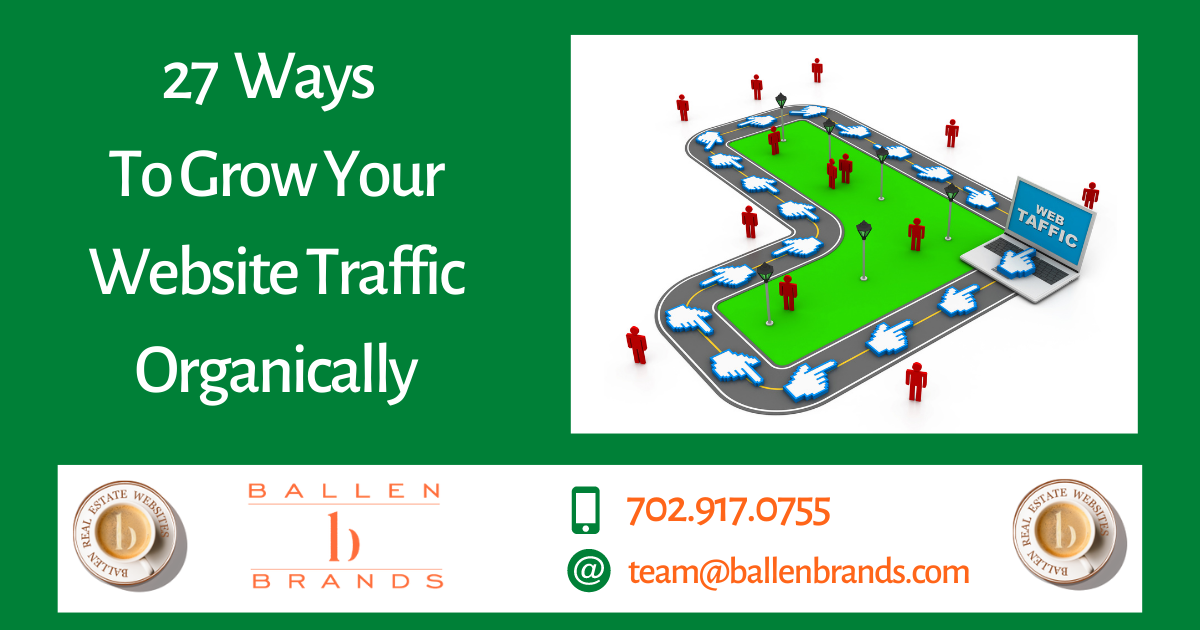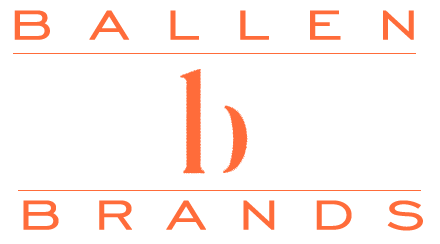Organic website traffic is traffic to your website that you didn’t have to directly pay for with pay-per-click (PPC) or social media marketing (SMM). Organic traffic is a slow build that requires a lot of time and patience and a whole lot of stellar content.
A well-written piece of content could take up to a year to start ranking in search. However, organic website traffic produces far more high-quality leads who are likely searching with intent to buy. Here are 27 ways to grow your website traffic organically.
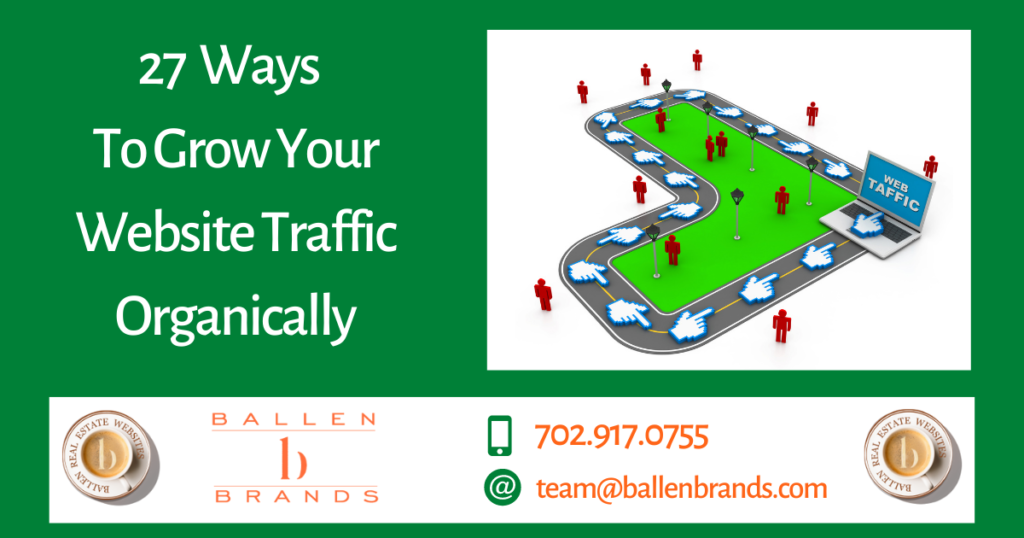
Optimize for Humans First, Then Search Engines
There was a time when content wasn’t king, before search engine algorithms evolved to assess a website’s value. It was commonplace to keyword-stuff poor writing that was chock full of misspellings and punctuation and grammatical errors. That’s no longer the case. In order to win over the search engines, you have to first impress the people. In fact, a poorly crafted article with keyword stuffing is now penalized by search engines.
While the goal is to gain ranking on the search engines organically for the coveted spots at the top of the search engine results page (SERP), you must write for people first, then machines. If people don’t find your content worthy, neither will the search engines.

Think about this: when a visitor clicks on your link, if they’re led to a page where it’s blatantly obvious it was written for search and not value, they click off of your page and go on to find something that better fulfills their need. They’re also not likely to share your content or refer you to a friend.
The whole idea of gaining organic traffic is to generate more quality leads over time, which means building trust with humans and with search engines. Your content is for your readers; you just need to optimize that content for search.
Check Your Current Search Engine Ranking
Before you can measure the success of your organic traffic growing efforts, it’s essential to know where you currently stand.
- How many viewers are visiting your site each month?
- Where did that traffic come from (direct link, Facebook, Twitter, LinkedIn, Pinterest?)
- How much time are they spending on the page?
- How many pages, on average, do users view? What’s your current bounce rate?
All of these metrics matter when setting out to grow organic traffic. Here are a few resources for measuring your website’s current stats:
The Architecture of Your Website
Google and other search engines have crawlers that index your website based on its structure and how your content is organized – its hierarchy.
If you’re not utilizing parent and child categories or tags properly, you’re scattering your information in a way that the search engines can’t properly index.
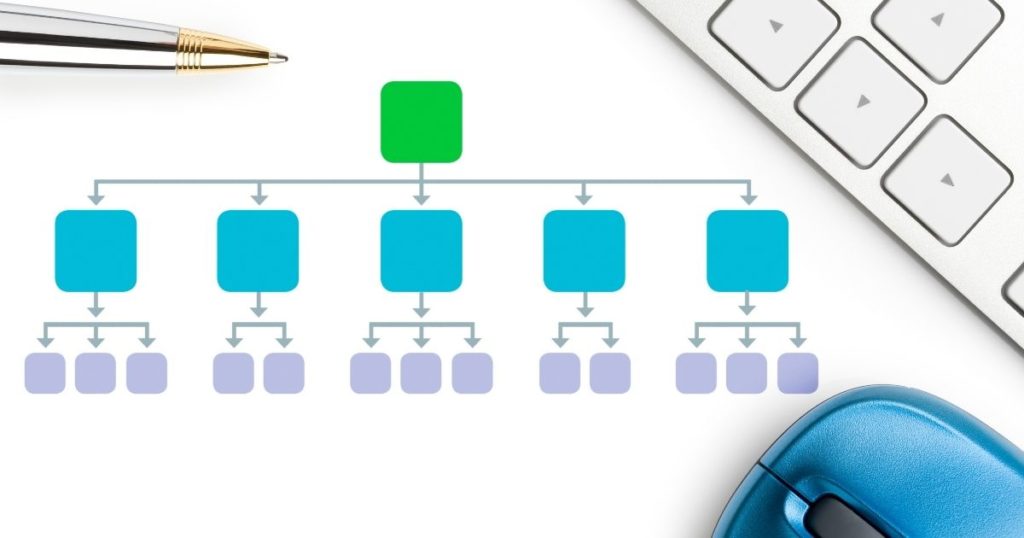
Design for Mobile
Almost 60 percent of online search queries are in the form of questions and frequently include the words
- How
- Are
- Where
- What
- Is
Tip: These words are ideal for headlines in your blog posts and articles. For example, a real estate agent might structure headlines, such as:
- How to Buy a House
- How to Sell a House
- Where to Find the Best Real Estate Agent
- What are Closing Costs When Buying a Home?
- Are There Special Programs for First-Time Buyers?
Define Keyword Strategies
Keywords are your most valuable tool when it comes to having your content found online in response to a search engine query. You’ll apply keywords to your website’s architecture, article headlines, URLs, and throughout your content creation and publication.
You can find keywords based on your customers’ frequently asked questions or by typing questions a person might type into a search engine.
Longtail keywords are extended keyword phrases designed to narrow down traffic to the people who are most likely to convert.

LSI keywords aren’t synonyms, but they are related words. For example:
- Real Estate
- Property
- House
- Home
- Condominium
- Townhouse
Be sure only to include your keyword phrase in one article only. If you use the same keyword phrase on multiple articles, that’s called keyword cannibalization, which confuses search engines because they won’t know which article to show on the search engine results page.
To help your website increase traffic organically, research and implement well-thought-out keyword strategies for your content.
Create Cornerstone Content, Pillar Posts, and Skyscrapers
Cornerstone content is long-form evergreen blogs and articles that give detailed and thorough information about a subject. Cornerstone content is also referred to as pillar posts and skyscrapers.
Evergreen content refers to articles and blog posts that aren’t dated by current trends, statistics, seasons, or other elements that would cause the content to expire.
Long-form content is a blog or article consisting of between 1,500 and 3,000 words.
For example, a buyer’s real estate agent might create a skyscraper blog post called “The Ultimate Guide for First-Time Homebuyers.” In it, you might find subheadings such as:
- How to Find the Best Buyer’s Real Estate Agent
- 7 Steps to Buying Your First Home
- Tips for First-Time Buyers
- Closing Costs for Buyers
- The Different Types of Home Mortgage Loans
- Special Programs for First-Time Buyers
- How to Balance Your Wish List with Your Budget
Each of those bullet points would serve as an independent long-form blog, but then you could create a long-form pillar post with links and descriptions of every one of those blogs.
In creating a pillar post, you’re also implementing internal links, which has many benefits. Internal links increase:
- The time a user spends on your site
- The number of pages they visit
- How many actions they take
- Increases search engine authority
You’ll win people and search engines over if your content is keyword rich and your posts are well organized, properly tagged, and relative to each other. Your material is well organized like a table of contents, which helps the search engines index your website.
As a bonus, you could copy and convert those blog posts into an eBook and promote it as a free offer to generate organic traffic and get more leads.
Post a Steady Stream of High-Quality Content
What is your content strategy?
It’s important to publish content consistently for multiple reasons. First, it prevents you from falling into the void of “out-of-sight, out-of-mind.”
Second, publishing regularly builds trust with viewers who will learn to rely on (and possibly share!) your current valuable content.

Third, steady publishing gives the search engines more material to crawl and index, making more of your content visible in search.
You’ll also have a flow of content to promote for free on social media, bringing more organic traffic to your website.
You can also upcycle old content by updating and re-optimizing it for optimal performance.
Internal Linking, Anchor Text, and Backlinks
Internal linking is a way of driving a user deeper into your website, keeping them there longer, and engaging them in more actions. You do this by linking related articles to one another or suggesting related posts. Internal linking is most effective when you connect your new content to an existing post that is already ranking well on search.
Anchor text refers to the visible, clickable words that you’ve hyperlinked to internal or external URLs. Anchor text must be relative to the content being linked. Search engines will reward you for linking to high-ranking, related content. On the contrary, it will also penalize you for abusing anchor text and hyperlinks.
Backlinks are when other websites link to yours. Backlinks help generate traffic from other reputable sources and because they lend to your search engine authority. The more high-ranking websites that point back to yours, the more likely Google is to show your site at the top of the SERP to grow organic traffic.
Focus on URL Structure; It Matters
The URL you create for each page in your website or blog is another key indicator to Google of what your post is about and can increase your chances of appearing on page one of the search engine results pages.
Your URL should be around 50 to 60 characters, about 4-5 words, and should contain your keyword or keyword phrase.
Don’t put dates in your URL. For example, a real estate agent might publish a hyperlocal blog post called “Where to See Christmas Lights in Las Vegas 2021.” While your blog heading or title can certainly add the year to indicate to readers that the content is fresh, your URL should not. The reason for this is that you can go back next year, update the list, change the date, and republish it as new without the URL being outdated or altered.

In 2021, if a viewer is looking online for places to view holiday lights and they see a URL that ends in 2020, they’re not likely to click the link.
Where certain words may propel a blog’s title, such as how, where, and in, they don’t perform well in URLs and could cause your post to fall in the ranks.
An ideal URL for that post on Christmas Lights, for example, would be www.yourwebsitename.com/Christmas-Lights-Las-Vegas.
Optimize Titles, Meta descriptions, and Alt Tags
Your blog titles should be clear, short, to the point, contain your keyword phrase, and be catchy – for both readers and search engines. Avoid plays on words or spellings that could confuse your audience.
Meta descriptions are 3-4 carefully constructed sentences describing your content. This paragraph is what shows up below your link on the SERPs. It’s your opportunity to convince viewers and search engines that your content is worth the read. A poorly constructed meta description will deter users from clicking.
Alt tags are the descriptions you add to an image. It’s important that your alt tags be natural and applicable, not keyword-stuffed.
Optimize Content for the Featured Snippet
Google’s featured snippet is a coveted spot on the SERP because it displays far more of your content than the title and meta description.
If Google determines that your content best provides answers to a search query, it will place you in the featured snippet. Content most likely to appear in a featured snippet includes:
- Bullet lists
- Numbered Lists
- Paragraphs
- Tables
- Videos
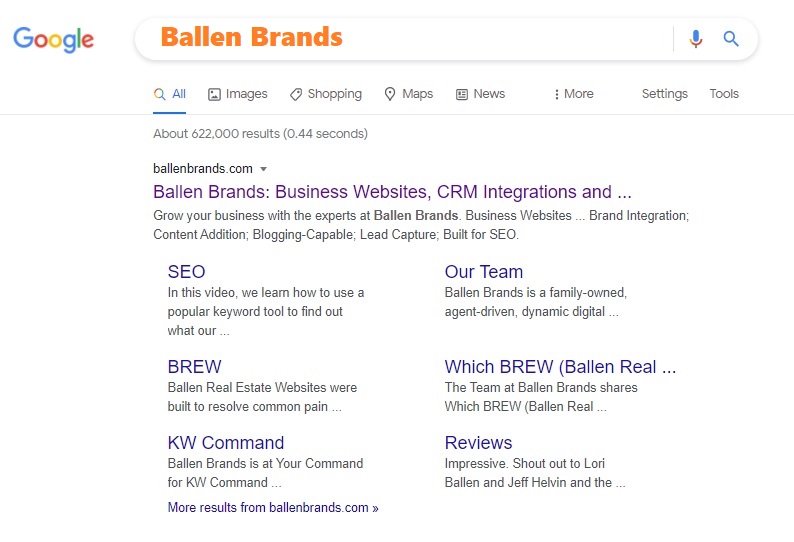
Reduce Your Bounce Rate
A bounce rate is the percentage of people who click on a link to your website, immediately deem it non-valuable, and click back out within seconds. It means the viewer didn’t find what they were looking for or had a poor user experience, such as lengthy page load times or a site that isn’t mobile-responsive.
A high bounce rate signals to Google that it should not show that page in its search results. On the other hand, a low bounce rate tells Google that your material is valuable to viewers and should be shown more frequently.
You can improve your bounce rate by determining which pieces of content are not performing well, re-optimizing them, and republishing.
Additional Ways to Increase Organic Website Traffic
- Videos and tutorials on YouTube
- Promote content on social media platforms
- Share content via email campaigns
- Answer questions on Quora and blogs
- Get involved in the blogosphere – like, comment, and share

- Join forums
- Create free offers from blog posts
- Publish or be a guest in podcasts
- Be a guest blogger
- Giveaway contest
- Create a free online course
- Offer a webinar
- Publish infographics
Test, Measure, and Modify
Using resources like Google Analytics, Clicky.com, SEMrush, and others, you can continue to track and measure the results of your efforts to increase organic web traffic.
Check your content’s performance over time. When you find a blog post that is performing exceptionally well, ask yourself why and then produce more content of a similar structure.
Get Started with PPC | Schedule A Consultation With Ballen BrandsThe Bottom Line
You could pay for clicks to your website, but it’s more lucrative in the long run to grow your traffic organically, which leads to more qualified leads.
Take the time to show your website some love with keyword-infused, search engine optimized, regularly published, high-quality content that viewers can use.
Write for your potential customers first but do-so with the search engines in mind. The more valuable content that you publish, the higher volume of organic traffic you’ll earn.
